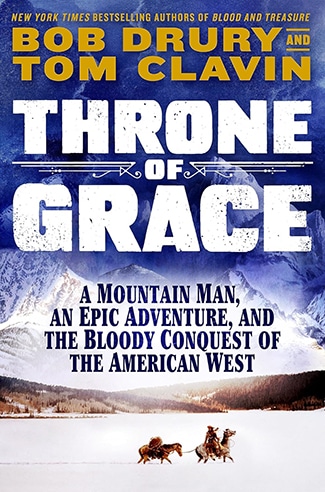Podcast Summary
Exploring the Diversity of American Special Forces: Navy SEALs are not the only special forces in America's military. Army Rangers and others have unique histories and roles, and their contributions have grown significantly since 9/11.
While Navy SEALs may be the most commonly known military special forces, there are several other branches with unique histories and roles in America's defense. Dick Couch, a retired Navy Seal and author, shares insights from his experiences and research in various special forces units in his book "Sua Sponte: The Forging of a Modern American Ranger." Civilians may have misconceptions about these forces, with Navy SEALs often receiving disproportionate attention. Special operations forces, including Navy SEALs, Army Rangers, and others, have distinct cultures and missions, and have grown significantly since 9/11. Understanding their differences and contributions is essential for appreciating the full scope of America's military capabilities.
Unique Roles of U.S. Special Operations Forces: Navy SEALs, Army Special Forces, 75th Rangers, and Marine Special Operations Command: Navy SEALs specialize in maritime expertise and long training, Army Special Forces train other militaries, 75th Rangers excel in light infantry work, and Marine Special Operations Command is an agile expeditionary force. Each branch contributes significantly to national security.
The Navy SEALs, Army Special Forces, 75th Rangers, and Marine Special Operations Command each have unique roles and training within the U.S. Special Operations community. Navy SEALs, known for their maritime expertise and long training pipeline, primarily focus on direct action missions. Army Special Forces, as trainers of other militaries, are crucial for enabling the U.S. to withdraw from conflicts. The 75th Rangers, with their short training period and expertise in light infantry work, excel in conducting combat assaults. Marine Special Operations Command, similar to SEALs, is an agile expeditionary force that engages in a variety of missions and also trains other security forces. The origins of U.S. special operations forces can be traced back to Richard Rogers and Rogers Rangers, with the need for specialized forces evolving organically over time or through formalized structures. Today, these branches continue to demonstrate exceptional skill and dedication, making significant contributions to national security.
Origins and Cultures of Navy SEALs, Army Special Forces, Army Rangers, and Marines Special Operations: Each of the Navy SEALs, Army Special Forces, Army Rangers, and Marines Special Operations has distinct origins and cultures, but they have collaborated and generally operate independently with unique methods and roles.
While the Navy SEALs, Army Special Forces, Army Rangers, and Marines Special Operations units all share a focus on special operations, they each have distinct origins and cultures. The Navy SEALs emerged from the need for hydrographic data during World War II, Army Special Forces can trace their roots back to the Civil War and the Cold War, Army Rangers are an extension of light infantry, and the Marines' Special Operations capabilities are relatively new. Despite their differences, these units have collaborated in the past, but they generally operate independently, each with their unique methods and roles. The level of integration between these units has not significantly increased since 9/11, as they are highly team-oriented and well-versed in their specific missions and methods. The Army Rangers, in particular, have gained prominence due to their involvement in high-profile missions like the Osama bin Laden raid, but their history and culture set them apart from other special operations units.
Becoming an Army Ranger: More Than Just Ranger School: Ranger School is a demanding leadership program, but only those who complete it and pass the rigorous selection process become Army Rangers. The 75th Ranger Regiment values high standards and ethos, making the title a prestigious one.
While Ranger School is a rigorous leadership program where officers learn to make decisions under extreme conditions, not everyone who completes it becomes an Army Ranger. Army Rangers are members of the 75th Ranger Regiment, known for their expertise in combat assault and light infantry tactics. To become a Ranger, a soldier must first complete basic training, infantry school, airborne school, and Ranger Assessment and Selection. This grueling two-month process has an attrition rate of around 75%, meaning only a quarter of those who start will finish. The real making of an Army Ranger comes after Ranger School, as they hone their skills in their infantry platoon and prepare for multiple combat deployments. The 75th Ranger Regiment is known for its strict adherence to high standards and strong sense of ethos, making the title of Army Ranger a high calling. Ranger Assessment and Selection shares some similarities with other specialized military training programs like BUDs, but its focus is on physical examinations and endurance tests.
Assessing the heart and mindset of potential Rangers: The Ranger selection process goes beyond physical and technical skills, testing teamwork, awareness, and the desire to serve and prove oneself.
Becoming a Ranger goes beyond physical and technical skills; it's about having the heart and mindset of a Ranger. The selection process tests not only combat shooting abilities but also teamwork and awareness. Young men often make multiple combat rotations before attending Ranger School, and having the Ranger tab is essential for career advancement. The Ranger Regiment assesses officers differently, requiring them to earn the tab as well. Men drawn to the Ranger Regiment share a desire to serve, be part of a special unit, and prove themselves. A typical combat rotation lasts several months, with Rangers deploying frequently. The Ranger Regiment is a high-quality organization, and considering it as an option for serving one's country is worthwhile.
Ranger Regiment's Role and Training: The Ranger Regiment, a U.S. Army unit, specializes in combat assault missions, undergoes rigorous training, and deploys overseas for around four months, returning for eight months before deploying again. About 20% of Rangers don't complete their first deployment, and those who fail assessments or underperform may have a chance to try again.
The Ranger Regiment, a specialized unit of the U.S. Army, is primarily used for combat assault missions in overseas deployments, which last around four months. After returning, they have around eight months at home before deploying again. Their training includes airfield seizure, and they serve as blocking forces for other special mission units. The Regiment is based at Fort Benning, with battalions at Fort Lewis, Hunter Army Airfield, and Fort Benning itself. Rangers go overseas and come back as battalions, and during downtime between deployments, they train to maintain their skills. About 20% of Rangers don't make it past their first deployment due to a lack of aptitude or talent for the job, and there's attrition during operational components as well. If a Ranger fails Ranger Assessment and Selection, or doesn't meet expectations during a deployment, they may be given a chance to try again, but it's not guaranteed. Injuries or other circumstances might also allow for a second chance.
Army Rangers' Role in Special Operations and Contingencies: Army Rangers play a crucial role in special operations and contingencies, preparing soldiers for combat rotations in regions like Iraq, Afghanistan, and Syria, while also expanding their roles to include WMD and counterinsurgency operations. Their future mission remains uncertain, but they will continue to engage with and train other security forces.
The Army Ranger regiment, as part of the 75th Ranger Regiment, plays a significant role in combat rotations in Iraq and Afghanistan, but also supports special operations in various other regions. The regiment is known for sending soldiers back to their units better prepared after their training, even if they don't make it the first time. Special operating forces, including the Army Rangers, have expanded their roles beyond narrow focuses to include weapons of mass destruction and counterinsurgency operations. Their future role in America's military remains to be seen, but they may continue to train and be ready for contingencies in areas like Syria, Afghanistan, Iraq, and potential hotspots like China's expansion into Southwest Asia or Russian aggression in Ukraine. The threat defines the mission, and the Army Special Forces will continue to engage with and train other security forces. However, there is a need to consider less deploying these forces and aligning their special operations components more carefully with a more narrow definition of national interests.
Career in Army Special Forces emphasizes soft skills and cultural understanding: Army Special Forces attracts people-oriented individuals with emphasis on soft skills and cultural understanding. Green Berets' career can last up to 30 years, with less physically demanding work but high fitness requirement.
Army Special Forces place a significant emphasis on soft skills and cultural understanding, making it a career that attracts people-oriented individuals. Special Forces Soldiers, or Green Berets, are known for their strong interpersonal abilities and are often tasked with teaching and building relationships with people from different backgrounds. The training process to become a Green Beret takes around two to three years, and their career can last up to 30 years or more. While Navy SEALs may have a more physically grueling training pipeline, Army Special Forces' work is less physically demanding but still requires a high level of fitness. Green Berets typically have a slightly older average age compared to Navy SEALs, with many staying in the service for long careers.
Expert Insights on Pursuing a Career in Special Operations: With the right preparation and conditioning, it's possible for mid-30s and older individuals to excel in Special Operations. Check official websites for information on signing up.
Couch, who has attended and written about all four major Special Operations training venues, emphasizes that it's a challenging field, especially for those in their mid-30s and beyond. However, with the right preparation and conditioning, it's possible to stay at the top. For those interested in pursuing a career in Special Operations, Couch suggests checking out the official websites of each component for information on how to sign up. For more information on Couch's work and his books, including "Suez Sponge," visit his website, DickCouch.com. For further resources and links to related topics, check out our show notes at AOM.IS/ArmyRanger. Remember, listening to the AO Podcast is just the first step – put what you've learned into action.












